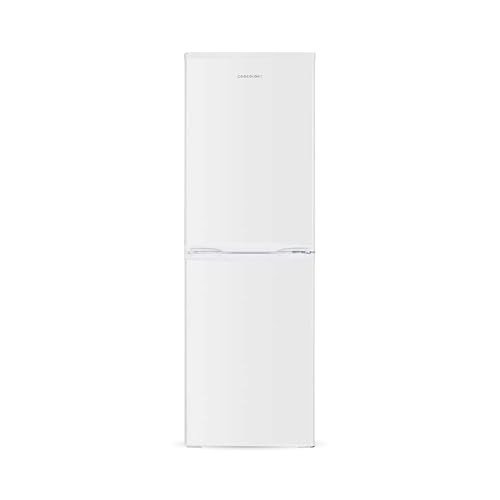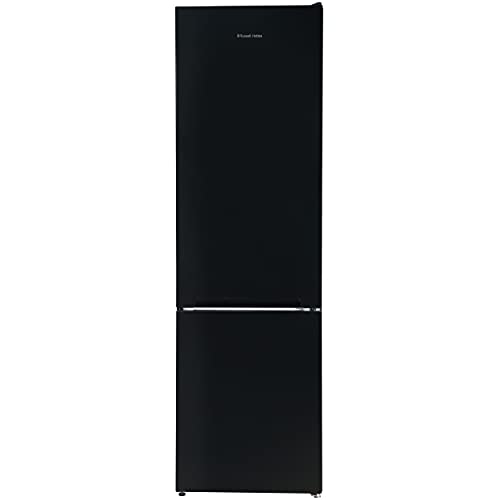
Cheap Fridge Freezer
متابعةنظرة عامة
-
القطاعات الاعلام-الصحافة
-
تم نشر الوظائف 0
-
المشاهدة 21
وصف الشركة
How To Tell The Good And Bad About Fridges And Freezers
Understanding Fridges and Freezers: The Essential Kitchen Appliances
Refrigerators and freezers are 2 of the most vital appliances in modern-day kitchen areas. These appliances serve an important role in food conservation and waste reduction by guaranteeing that perishable products remain fresh and safe for consumption. This short article explores the various types of fridges and freezers, their performances, and important factors to consider for selection and maintenance.
Types of Refrigerators
The marketplace offers a range of refrigerator types, each designed to meet various customer needs. Below is a list of the most typical types of fridges:
-
Top-Freezer Refrigerators
- Most common type.
- Freezer compartment is situated above the refrigerator area.
- Typically more budget-friendly and energy-efficient.
-
Bottom-Freezer Refrigerators
- Freezer is located at the bottom.
- Permits easier access to fresh products at eye level.
- Often includes pull-out drawers for better company.
-
Side-by-Side Refrigerators

- Refrigerator and freezer sections are surrounding.
- Suitable for narrow kitchens and permits simple access to both compartments.
- Frequently comes with water and ice dispensers.
-
French Door Refrigerators
- Combines a bottom freezer with double doors at the top.
- Deals ample storage and trendy designs.
- Often includes features like temperature-controlled drawers.
-
Compact Refrigerators
- Smaller sized size suitable for limited areas.
- Typically utilized in dormitory, studio apartments, or as secondary fridges.
Table 1: Comparison of Refrigerator Types
| Type | Benefits | Downsides | Common Size |
|---|---|---|---|
| Top-Freezer | Inexpensive, energy-efficient | Less practical access to the freezer | 14-30 cu. ft. |
| Bottom-Freezer | Much easier access to fresh food | Freezer can be more difficult to organize | 19-30 cu. ft. |
| Side-by-Side | Easy gain access to, water/ice dispenser | Narrow vs. storage space | 22-30 cu. ft. |
| French Door | Stylish, roomy, organized | More pricey | 20-30+ cu. ft. |
| Compact | Space-saving, portable | Limited storage | 1.7-5.5 cu. ft. |
Types of Freezers
Freezers are an equally important appliance for food preservation. They come in numerous styles designed to fit various household requirements. Think about the following types:
-
Upright Freezers
- Operate like a basic refrigerator with vertical storage.
- Easier to arrange with shelves and compartments.
-
Chest Freezers

- Large, horizontal design usually providing more storage space.
- Maintains temperature levels much better throughout power blackouts.
- More energy-efficient than upright designs.
-
Portable Freezers
- Compact units ideal for outside activities or small spaces.
- Frequently used for camping journeys or as short-lived storage.
Table 2: Comparison of Freezer Types
| Type | Benefits | Drawbacks | Normal Size |
|---|---|---|---|
| Upright Freezer | Easier to arrange | Less energy-efficient, more flooring space | 5-20 cu. ft. |
| Chest Freezer | Holds more products, energy-efficient | Harder to organize | 5-25 cu. ft. |
| Portable Freezer | Compact and versatile | Limited storage capability | 1-10 cu. ft. |
Key Features to Consider
When selecting a fridge or freezer, customers ought to remember several features that can enhance performance:
- Energy Efficiency: Look for models with the ENERGY STAR certification to conserve on electrical energy bills.
- Storage Capacity: Evaluate storage requirements based upon household size and eating habits.
- Temperature level Control: Some devices offer digital controls for exact temperature settings.
- Adjustable Shelving: Customizable shelving permits for optimum company.
- Water and Ice Dispenser: Offers convenience but can take up important area inside.
- Sound Level: Sound rankings can affect convenience, specifically in open-concept homes.
Advantages and disadvantages of Having a Fridge and Freezer
While fridges and freezers are vital technologies, they also have specific benefits and downsides:
| Pros | Cons |
|---|---|
| Maintain food life expectancy and minimize waste | Require regular upkeep |
| Permit bulk buying and meal prepping | Can be expensive to purchase and run |
| Deal benefit and quick access to food | Inhabit considerable kitchen area space |
Maintenance Tips
To ensure durability and optimal performance of fridges and freezers, consider the following maintenance suggestions:
- Regular Cleaning: Clean the exterior and interior occasionally to avoid buildup of dirt and germs.
- Check Seals: Inspect door seals routinely for leaks to maintain efficiency.
- Temperature Settings: Keep the fridge at 34-38 ° F and the freezer at 0 ° F for optimum food conservation.
- Thaw as Needed: Chest freezers should be thawed frequently to keep effectiveness.
- Clear Air Vents: Ensure that airflow isn’t obstructed to enhance energy performance.
FAQs About Fridges and Freezers
Q1: How long can food be kept in a freezer?A: Most foods can be kept in a freezer for a number of months. Meats and poultry often last 4-12 months, while vegetables can last up to 8-12 months.
Q2: How frequently should I clean my fridge and freezer?A: It is a good idea to clean your fridge and freezer every 3 to 6 months, or as required when spills take place. Q3: Can I put hot food directly in the fridge?A: It is recommended to cool hot food to room temperature level before positioning it in the Fridge Freezer Uk Sale to prevent
raising the temperature level inside the appliance. Q4: Why is my fridge running constantly?A: This might be due to a malfunctioning thermostat, clogged coils, or door seals that aren’t working correctly. Fridges and freezers are indispensable
properties to contemporary households, supplying important services for food storage and conservation.
Understanding the various types, functions, and maintenance requirements can help customers select the ideal home appliances for their needs and optimize their functionality. Embracing energy-efficient designs not just supports sustainable practices but likewise contributes to significant cost savings on energy expenses, making notified choices more crucial than ever.
